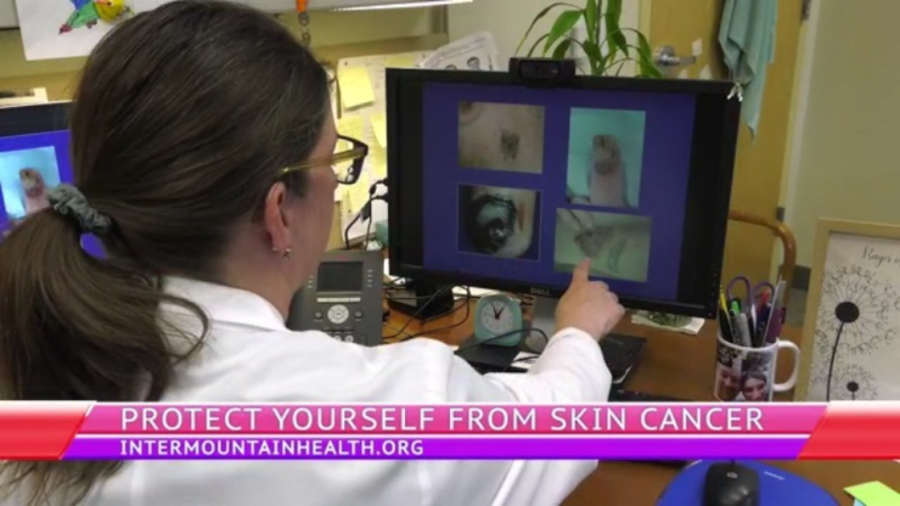10 things you can do to prevent skin cancer

MURRAY, Utah (ABC4 Utah) – One in five people will get skin cancer in their lifetime. That number includes more than 800 Utahns who are diagnosed with skin cancer each year.
The good news, according to cancer experts at Intermountain Health, is that skin cancer can almost always be cured when it’s found and treated early.
They say the best way to prevent skin cancer is to protect your skin from sun damage. With summer upon us, it’s especially important to be vigilant about sun protection.
Vigilance is also vital when it comes to detecting skin cancer at its earlier and most treatable stage.
As many people have missed vital annual exams with their healthcare provider this past year due to the COVID pandemic, Intermountain Health cancer experts advise that you get an appointment scheduled to ensure that you don’t have skin cancer or unusual moles.
“Melanoma is one of the most aggressive forms of skin cancer and is often diagnosed in hard-to-see areas of the body. Your doctor can see what you can’t,” said Caroline Nebhan, a medical oncologist at Intermountain Health.
A sunburn is a clear sign that the DNA in your skin cells has been damaged by too much UV radiation. In fact, getting a painful sunburn just once every two years can triple your risk of melanoma skin cancer.
Sunburn doesn’t have to be raw, peeling or blistering. If your skin becomes pink or red in the sun, it’s sunburnt.
Parents are advised to pay more attention to protection from early-life sun exposure for their kids to reduce the likelihood of developing melanoma as they grow up.
Older individuals should also be cautious with their sun exposure, because cumulative sun exposure increases your risk of skin cancer.
What’s the best thing you can do to decrease your risk of skin cancer, especially in the summer? The number one thing is to protect your skin. How can you do that in the warmer months and still enjoy being outside? Make sure you know how to protect yourself from the sun and get the facts about skin cancer.
Here are 10 skin cancer facts from Intermountain Health cancer experts that you should know:
1) Anyone can get skin cancer, regardless of race or skin color. If you have a darker skin tone, you’ll have more pigment that helps protect your skin, but you’re not immune from developing skin cancer because of ultraviolet (UV) damage.
2) Most skin cancer is a result of exposure from ultraviolet (UV) radiation. Sunlight is the main source of UV rays, but tanning beds and sun lamps are also a source. Skin cancer starts when the UV rays damage the DNA of skin cells.
3) Ultraviolet exposure is strongest between 10 a.m. and 3 p.m. Seeking shade in those hours or if your shadow appears shorter than you are is advised. Even if it’s cloudy, you’ll want to be cautious. Up to 80 percent of the sun’s ultraviolet rays can pass through the clouds.
4) Use a broad-spectrum, water-resistant sunscreen that’s at least SPF 30. This helps protect you from both ultraviolet A (UVA) and ultraviolet B (UVB) rays. Reapply approximately every two hours, even on cloudy days, and especially after swimming or sweating. Use sunscreen daily, even if you’ll be in the shade.
5) Not all shade is equally protective from the sun. You can be in the shade and still be exposed to the sun’s ultraviolet rays, particularly the UVB rays — these are considered the most harmful part of sunlight, as they can reach the skin indirectly and bounce back from surfaces like sand or concrete.
6) Some medications can cause sun sensitivity. Some medication can cause your skin to be more susceptible to UV rays. There are even over-the-counter medications that can cause sun sensitivity, such as nonsteroidal anti-inflammatory medications.
7) Intense athletic training can affect your skin’s immune system. If you’re training for a marathon or any kind of strenuous, long-duration exercise, your immune system may be weakened. This could cause you to become more susceptible to some types of skin cancer, including melanoma. If you run outside, wear a ball cap and use sunscreen, including on your ears and back of neck.
8) If you like the look of a tan, try a self-tanner product or spray, along with sunscreen. Avoid tanning beds as they expose you to UV rays, not to mention cause wrinkles and premature aging. Studies have found that tanning beds increase the risk of melanoma, especially in women under 45.
9) While skin cancer can develop anywhere on the body, the face is a common area. Direct sun is most likely to hit the face, but any exposed area is susceptible, including the head, ears, lips, and neck, and anywhere the skin is exposed. Interestingly, due to the use of tanning beds, skin cancer on the torso is the most common place for women ages 15-29 to develop melanoma.
10) Know the warning signs of melanoma, which include changes in size, shape, or color of a mole or skin lesion, or the appearance of new growth on the skin. If you’ve had more than five sunburns over the course of a lifetime, your risk of melanoma doubles, so be vigilant about checking your skin and talk to your healthcare provider, you have concerns.
Thanks for signing up!
Watch for us in your inbox.
Subscribe Now
Good Things Utah
Sponsored by Intermountain Health.
Copyright 2024 Nexstar Media, Inc. All rights reserved. This material may not be published, broadcast, rewritten, or redistributed.
For the latest news, weather, sports, and streaming video, head to ABC4 Utah.

